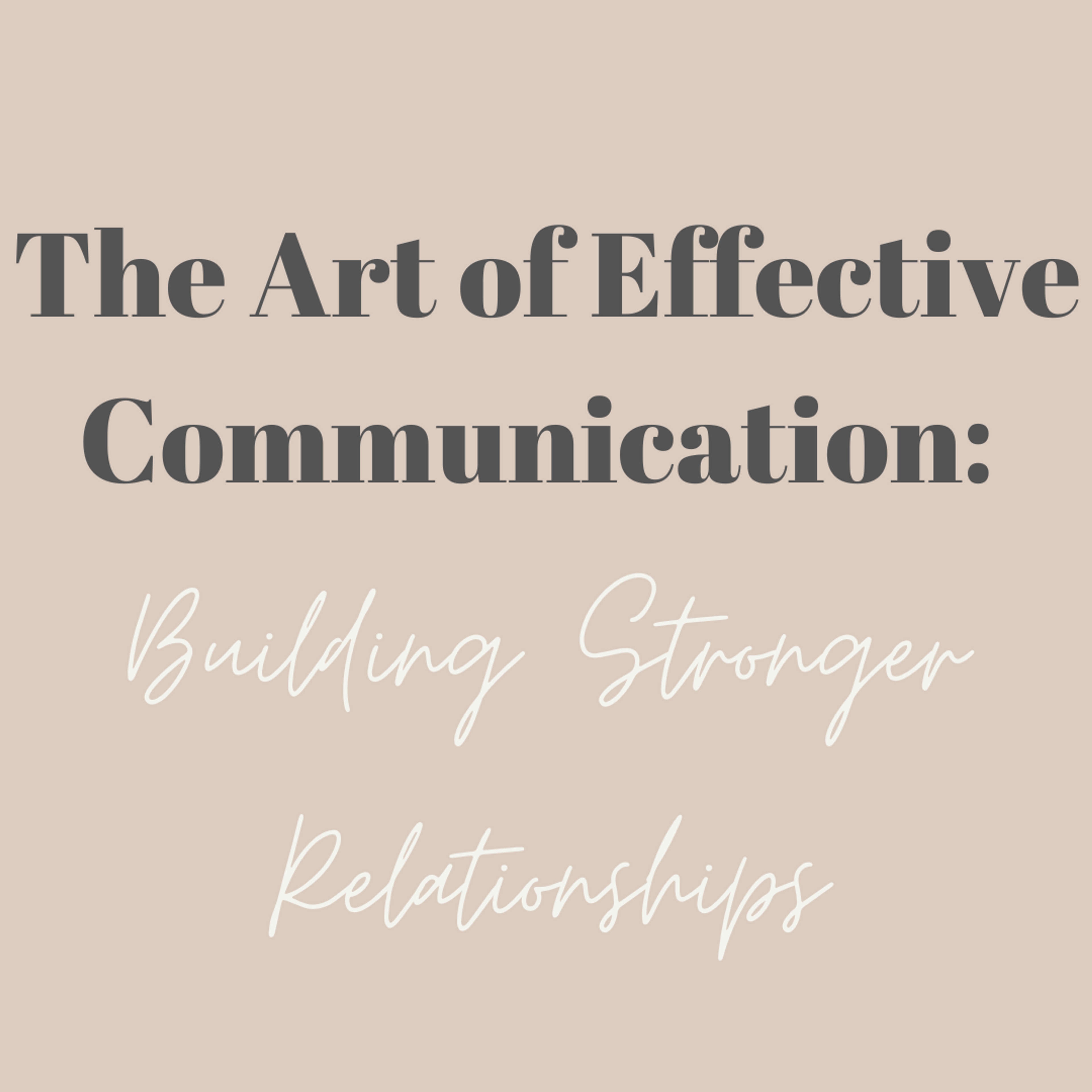The Art of Effective Communication: Building Stronger Relationships


Communication is one of the fundamental skills that holds immense importance in both personal and professional spheres. The art of effective communication is not merely a skill; it's a dynamic dance that shapes the rhythm and depth of our interactions.
Effective communication is not a monologue but a dialogue, where words, gestures, and nuances harmonize to create a symphony of understanding. In personal relationships, this dance forms the heart of emotional intimacy, while in a professional environment, it lays the foundation for cooperation and success.
Communication in the workplace revolves around conveying information related to work. Knowing when and how to communicate effectively can reduce misunderstandings, enhance team satisfaction, and fortify cooperation and trust. Teams adept at effective communication on work-related matters can navigate challenges more efficiently.
Communication in the work environment involves sharing information about specific tasks, providing project status updates, and offering feedback to supervisors and colleagues. Proficiency in workplace communication is a crucial element of effective collaboration. Failure to communicate clearly can lead to misunderstandings, confusion, and unintentional harm to your business.
Various modes of communication are employed in the workplace, including face-to-face communication, written communication, video conferencing, or group meetings. Additionally, communication can occur in real-time or asynchronously, such as through email, video, or project management tools. Examples of communication in the work environment include team meetings, one-on-one meetings, information reception, updates on project status or progress, and non-verbal communication.
On a daily basis, few of us consciously consider how communication functions—whether our words align with our intentions and whether we accurately grasp the intended meaning behind what we hear. Often, we act on intuition, and unfortunately, sometimes mechanically, neglecting to reflect on how we can enhance our communication skills. Yet, a few simple principles can significantly improve our competencies in this area.
SHOW WILLINGNESS
The adage "where there's a will, there's a way" holds true when it comes to effective communication. With a touch of goodwill, patience, and openness, even individuals seemingly speaking different languages can communicate effectively. Many of us may have experienced this scenario abroad, communicating with someone who didn't share our language—thanks to openness and a willingness to communicate.
CHOOSE A FORM
Communication takes various forms, and depending on the situation, needs, skills, and willingness of both parties, it's advisable to choose the most convenient and effective one. Face-to-face conversations may be suitable in some cases, while teleconferences, email exchanges, or instant messenger discussions might work better in others. If the chosen form seems ineffective, there are alternative options worth exploring.
BE SPECIFIC
While communication skills often include the ability to express oneself freely and interestingly, the essence of effective communication lies in translating thoughts into concrete, factual words. Flowery metaphors or intriguing digressions can sometimes obscure what truly matters—facts, data, and specifics. Focusing on these elements is crucial for understanding and being understood.
MOVE FROM WHAT TO HOW
In mutual understanding, the "how" is as important as the "what." The pace of speech, complexity level, mental shortcuts, vocabulary, examples, and additional explanations all play a significant role. Strive to speak in concise, simple sentences, avoiding overwhelming the listener. Steer clear of difficult words or jargon, and be mindful of potential blockers, such as interruptions, a commanding tone, off-topic discussions, moralizing, or aggressive body language.
HAVE DOUBTS
Is what we heard truly what the person meant? Is our message well understood? Verifying mutual understanding is a crucial stage of communication, best achieved through asking questions. Ask for clarification when unsure, and confirm understanding when confident. Use closed questions for succinct answers or open questions for broader explanations. Paraphrasing—repeating what was heard in our words—ensures accurate comprehension.
In conclusion, effective communication is the cornerstone of successful interactions, both personally and professionally. It is not merely a skill to possess but a continuous process of refinement and adaptation. By embracing a mindset of openness, choosing appropriate communication forms, prioritizing specificity over embellishment, considering the "how" alongside the "what," and actively verifying mutual understanding, we can elevate our communication skills.
Remember, communication is not a solo performance but a collaborative dance that requires synchronization and harmony. As we navigate the intricacies of personal relationships and professional endeavors, let us be intentional about fostering an environment where ideas flow freely, understanding prevails, and connections thrive.
By incorporating these principles into our daily communication practices, we lay the groundwork for stronger relationships, more effective collaboration, and ultimately, greater success in both our personal and professional lives. So, let's speak to be understood and listen to understand, ensuring that the symphony of communication continues to resonate with clarity, purpose, and meaningful connection.


